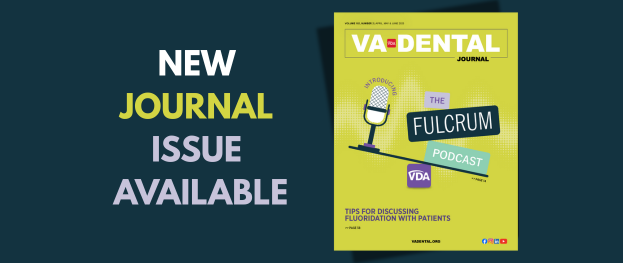
Implementation of D4346 In Your Office
2017 gave us the new dental code D4346, however, confusion still exists around the usage and the coverage of this code. The code is interesting in that it was intended to fill a gap in coverage between those patients who need scaling and root planing and those who have a healthy mouth.
By Teresa Duncan, MS, FAADOM
2017 gave us the new dental code D4346, however, confusion still exists around the usage and the coverage of this code. The code is interesting in that it was intended to fill a gap in coverage between those patients who need scaling and root planing and those who have a healthy mouth.
As a reminder, the code in its entirety is:
D4346 scaling in presence of generalized moderate or severe gingival inflammation – full mouth, after oral evaluation The removal of plaque, calculus and stains from supra- and sub-gingival tooth surfaces when there is generalized moderate or severe gingival inflammation in the absence of periodontitis. It is indicated for patients who have swollen, inflamed gingiva, generalized suprabony pockets, and moderate to severe bleeding on probing. Should not be reported in conjunction with prophylaxis, scaling and root planing, or debridement procedures.
The confusion stems from its practical usage in the office and then on the coverage side of the code. The implementation of the code into practice is dependent upon a clinical team (both doctor and hygienist) who are able to confidently recommend the procedure. While this sounds simple, it’s often not. Many offices have differences in clinical opinions and so it’s important for the doctor and the hygiene team to share the same soft tissue management philosophy. Review cases with your team of when this code is most appropriate. You may see this in the mouth:
• Bleeding upon evaluation and probing but pocket depth is not alarming
• Inflamed gingiva but no evidence of bone loss on radiograph
Relaying the information to the patient when they are expecting “just a preventive visit’ can be problematic as well. It’s a good idea to practice your verbiage – as a team- so that it flows smoothly when the patient is in front of you.
If the diagnosis of gingivitis is made, this code may be appropriate. The hygiene department should discuss how this code can change the flow of the patient’s visit. Keep in mind that a diagnosis is needed in order to recommend this procedure and to use the code D4346. The code is not meant to replace prophylaxis, scaling and root planing or osseous surgery. Rather it is meant to more accurately describe a common periodontal condition for which a code did not exist. Until your office is used to how this code is reimbursed, remember that this will be a confusing financial conversation. Being upfront about the cost is the number one rule of insurance and financial customer service. This leads me to the next confusion point.
What is the true cost to the patient? If insurance is involved then you will need to explain that no longer is this visit covered as a preventive measure. There is a real chance that not only will the patient’s deductible be applied but they’ll also have a copayment. Most insurance companies have been covering it but will provide benefits for a D1110 which is a lower fee. You are able to charge up to the contracted fee for D4346 but the difference between D1110 and D4346 will be borne by the patient. Sometimes this can be a significant amount if the deductible is large. Insurance coordinators will need to either call the insurance company or verify benefits online to ensure that they know how it will be processed. Add this to their many insurance-related tasks!
In order to have this conversation you’ll need visual evidence and strong verbal skills. Speaking the periodontal readings is a way to involve the patient in this process. Let them know what the numbers mean but also use your intraoral images to educate the patient. The fact that the necessity for D4346 is not evident on radiographs means that the camera is your best friend. Show your patient the inflammation that you see and gently point out that more bleeding is present than you would prefer. If you are not communicating this to the patient then it becomes more difficult for the administrative team members to discuss copayment.
Administrative team members across the country have shared with me that even though benefits are being provided for prophylaxis, patients are not happy with the added out-of-pocket expense. Some teams have shared that they’ve stopped using the code as it’s just been problematic. If this sounds familiar then regroup! Have a team discussion on how this can fit into your clinical guidelines and commit to the following items:
• Attempt to find out how D4346 is covered during regular benefit checks.
• Practice (as a team) both the clinical and financial conversations for this code use.
• The insurance coordinator will follow up on claims to ensure that they are paid at least at the prophylaxis allowance. Appeals should be filed if applicable.
• Increase efforts to document diagnosis so that claim requests for information are supported.
Implementing new codes are a team effort and should be approached as a group initiative. When everyone is on the same page then patients will benefit from consistent, effective and superior patient care.
Teresa Duncan, MS, FAADOM is an international speaker who focuses on revenue, dental insurance & management issues. Her website features more insurance information along with online insurance training and a book on Insurance Conversations. http://www.odysseymgmt.com/
2017 gave us the new dental code D4346, however, confusion still exists around the usage and the coverage of this code. The code is interesting in that it was intended to fill a gap in coverage between those patients who need scaling and root planing and those who have a healthy mouth.
As a reminder, the code in its entirety is:
D4346 scaling in presence of generalized moderate or severe gingival inflammation – full mouth, after oral evaluation The removal of plaque, calculus and stains from supra- and sub-gingival tooth surfaces when there is generalized moderate or severe gingival inflammation in the absence of periodontitis. It is indicated for patients who have swollen, inflamed gingiva, generalized suprabony pockets, and moderate to severe bleeding on probing. Should not be reported in conjunction with prophylaxis, scaling and root planing, or debridement procedures.
The confusion stems from its practical usage in the office and then on the coverage side of the code. The implementation of the code into practice is dependent upon a clinical team (both doctor and hygienist) who are able to confidently recommend the procedure. While this sounds simple, it’s often not. Many offices have differences in clinical opinions and so it’s important for the doctor and the hygiene team to share the same soft tissue management philosophy. Review cases with your team of when this code is most appropriate. You may see this in the mouth:
• Bleeding upon evaluation and probing but pocket depth is not alarming
• Inflamed gingiva but no evidence of bone loss on radiograph
Relaying the information to the patient when they are expecting “just a preventive visit’ can be problematic as well. It’s a good idea to practice your verbiage – as a team- so that it flows smoothly when the patient is in front of you.
If the diagnosis of gingivitis is made, this code may be appropriate. The hygiene department should discuss how this code can change the flow of the patient’s visit. Keep in mind that a diagnosis is needed in order to recommend this procedure and to use the code D4346. The code is not meant to replace prophylaxis, scaling and root planing or osseous surgery. Rather it is meant to more accurately describe a common periodontal condition for which a code did not exist. Until your office is used to how this code is reimbursed, remember that this will be a confusing financial conversation. Being upfront about the cost is the number one rule of insurance and financial customer service. This leads me to the next confusion point.
What is the true cost to the patient? If insurance is involved then you will need to explain that no longer is this visit covered as a preventive measure. There is a real chance that not only will the patient’s deductible be applied but they’ll also have a copayment. Most insurance companies have been covering it but will provide benefits for a D1110 which is a lower fee. You are able to charge up to the contracted fee for D4346 but the difference between D1110 and D4346 will be borne by the patient. Sometimes this can be a significant amount if the deductible is large. Insurance coordinators will need to either call the insurance company or verify benefits online to ensure that they know how it will be processed. Add this to their many insurance-related tasks!
In order to have this conversation you’ll need visual evidence and strong verbal skills. Speaking the periodontal readings is a way to involve the patient in this process. Let them know what the numbers mean but also use your intraoral images to educate the patient. The fact that the necessity for D4346 is not evident on radiographs means that the camera is your best friend. Show your patient the inflammation that you see and gently point out that more bleeding is present than you would prefer. If you are not communicating this to the patient then it becomes more difficult for the administrative team members to discuss copayment.
Administrative team members across the country have shared with me that even though benefits are being provided for prophylaxis, patients are not happy with the added out-of-pocket expense. Some teams have shared that they’ve stopped using the code as it’s just been problematic. If this sounds familiar then regroup! Have a team discussion on how this can fit into your clinical guidelines and commit to the following items:
• Attempt to find out how D4346 is covered during regular benefit checks.
• Practice (as a team) both the clinical and financial conversations for this code use.
• The insurance coordinator will follow up on claims to ensure that they are paid at least at the prophylaxis allowance. Appeals should be filed if applicable.
• Increase efforts to document diagnosis so that claim requests for information are supported.
Implementing new codes are a team effort and should be approached as a group initiative. When everyone is on the same page then patients will benefit from consistent, effective and superior patient care.
Teresa Duncan, MS, FAADOM is an international speaker who focuses on revenue, dental insurance & management issues. Her website features more insurance information along with online insurance training and a book on Insurance Conversations. http://www.odysseymgmt.com/







